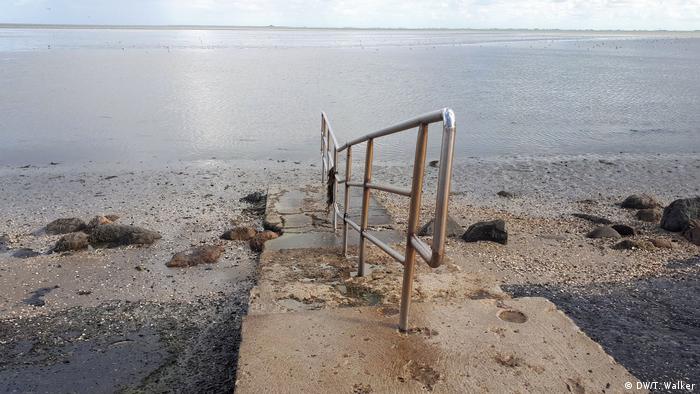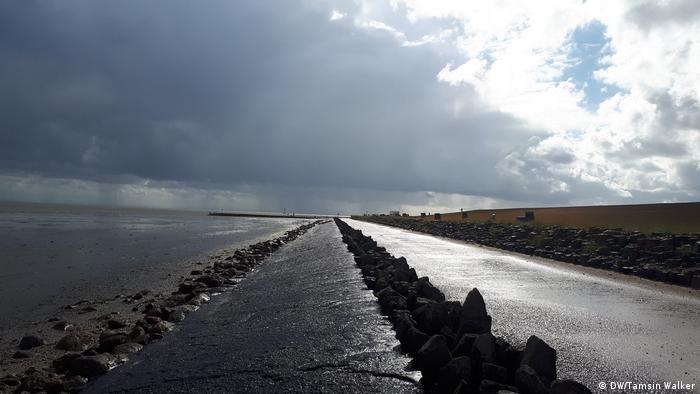 |
| German mud flats in danger |
"The wind whips threatening clouds across a dark blue sky above the North Frisian island of Pellworm. Petra Feldkamp casts a glance toward a high green dike in the near distance. Directly behind it, the sea rolls and roars. Out of sight, but not out of mind.
Particularly after a summer in which the realities of our warming global climate have been scorched into the German consciousness.
"I think we all take it seriously. When you live here, you see the situation, you feel it," says Feldkamp, whose family has been on the island for generations. "But this is a place of calm, so it doesn't really scare you."
Though she acknowledges that her sense of calm is in large part due to the protective dikes that were recently raised, and without which the island "would drown," she says she feels "totally safe."
 |
| When the sea is calm, so is the sense of living alongside it. |
Too close yet too comfortable
It is also his job to foster an understanding among communities inhabiting the 3,900 square kilometers (1,505 square miles) of lowland — some of which was originally sea snared over time through the construction of dikes — of the capricious and sometimes ferocious nature of the waters that swirl around them.
"People have largely become careless," Langmaack said. "They've suppressed it, because there hasn't been a devastating storm surge for several decades."
And because the several hundred kilometers of complex dikes form a wall between them and the sea, they are safer than ever before.
 |
| Dikes are constantly being repaired and renewed |
Dikes are constantly being repaired and renewed to enable the people to continue to live in the flatlands in relative safety
The sea rose only 28 centimeters (11 inches) between 1940 and 2007, which is in keeping with recordings from the previous century. But there is a sense of urgency about the need to prepare local communities for the worst, in part stirred by cyclone Xaver, which hit the region in 2013, but also because both sea and storm water levels are predicted to rise within the coming decades.
Planning for the unknown
Besides alerting the population, the agency for coastal defense has been strengthening its fortifications with so-called "climate dikes."
A far cry from the early hand-built clay incarnations that began appearing on the flat northern German landscape around a millennium ago, these precision-engineered giant green slopes are designed to keep the waves at bay in such a way that it would be easy to add a new layer on top if water levels were to suddenly rise much faster than current forecasts suggest.
"We have to look to the future," Langmaack said. "What we have is rising temperatures, and that means rising sea levels, but nobody can tell us how the curve is going to develop, and that makes it very difficult."
"We're genuinely planning for the next 100 years," he continued."
.......................
"As a conservationist, Fröhlich doesn't generally sanction the idea of tampering with nature, but climate change induced sea level rise could, he says, be grounds enough for an exception.
"I think we underestimate what's around the corner," he said. "I'm worried that large parts of this area will be lost. I really am."
And if that happens, if the Wadden Sea starts to swallow itself, there's a very good chance the sense of calm it instills in those who live with and from it, will sink as well."
Go to the original, complete, 2018 DW article
No comments:
Post a Comment